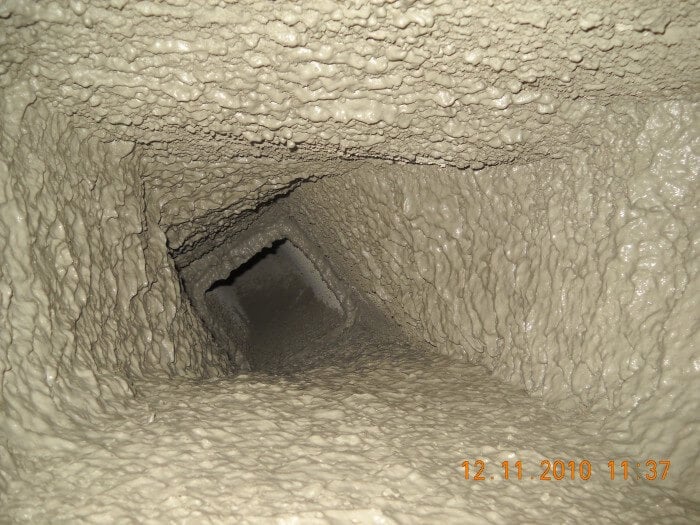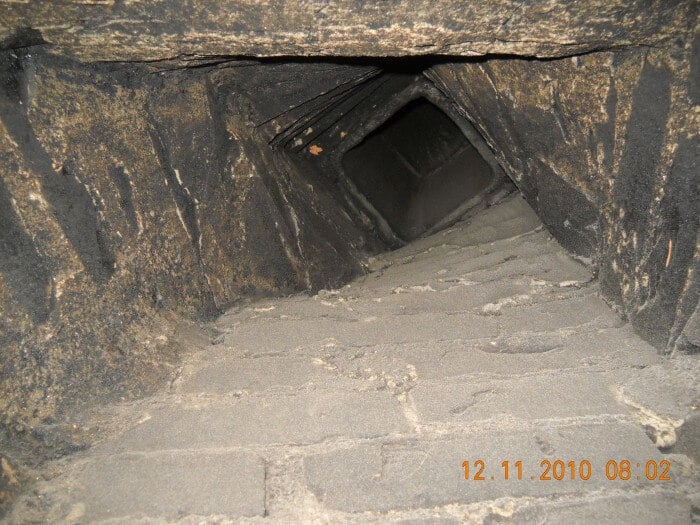Unlike problems with many other features in your home, it’s not always obvious to the naked eye if there’s a serious problem with your fireplace or chimney. It’s important to be vigilant about inspecting your fireplace on a regular basis to check for hidden problems that may cause fires, permit carbon monoxide to seep into the home, or even lead to mold and rot.
Creosote buildup
Creosote is often used to treat wood burned in fireplaces. When you burn creosote-treated logs in your fireplace, they release creosote resin, which can build up on the walls of your chimney. Creosote is highly flammable; a few errant sparks from a cozy fire can cause the the walls of your chimney to ignite.
A slow-burning fire, or one that fails to burn at all, is about the only visible symptom of creosote buildup. It’s important to inspect the walls of your chimney using a flashlight and scratch at the walls to check for buildup. If the buildup is ⅛” or less in thickness, you should schedule a thorough cleaning with a chimney sweep. If the buildup is greater than ⅛” thick, stop using your fireplace immediately and call a professional right away.
Some chimney professionals suggest burning citrus or potato peels, which may help dry out the creosote resin and prevent it from catching fire. This DIY fix shouldn’t replace regular cleaning and maintenance, however.
Blockage
A chimney blockage can be caused by a buildup of leaves and debris, or even a bird’s nest, especially if you haven’t used your fireplace for a few months.
A blockage is difficult to diagnose on your own, but if you notice that your fires are smokier than usual, it’s a good idea to call a chimney repair technician to inspect for blockage.
Cracks
Depending on how your chimney and fireplace was initially built, you could have either a tile or stainless steel lined flue. This lining experiences an intense amount of heat and stress. Tile liners are less sturdy than stainless steel ones, but both can become cracked, causing fire to break out in your home’s wooden foundation. A cracked flue can also cause carbon monoxide to leak into your home.
The masonry joints in your fireplace are another common area for cracks to develop. If they are not detected and repaired early, they can lead to structural damage in your home, which can cost several thousands of dollars to repair. You can generally spot these cracks on a visual inspection of your fireplace and chimney, or your chimney sweep may bring them to your attention during routine cleaning and maintenance.
Water leaks
Cracks in the roofline can easily lead to water damage—and potential wood rot and mold. If water seeps into the flue, it can rust out the damper, causing it to fail.
If you are a handy DIY-er, you may be able to manage these repairs on your own, but replacing the flashing and sealing the cracks may be better left to a professional.
Damaged chimney cap or crown
These structures serve two essential functions in your fireplace—they keep rain and snow from entering your home through the flue and prevent dangerous sparks from flying out of the chimney and onto your roof.
A cracked crown, which is the top level of the chimney and usually made of leftover mortar or cement, can wreak havoc on your home, especially if water gets into your home’s wooden foundation or the bricks and mortar of your chimney. Water expands when it freezes, causing larger cracks to develop in these structures, ultimately compromising the integrity of your entire fireplace and walls. Costs to repair these extensive defects can easily run into thousands of dollars.
The cap, which is like a little stainless steel rain hat protecting the flue, is significantly less expensive to replace or repair, but extremely important in protecting your fireplace from the elements.

